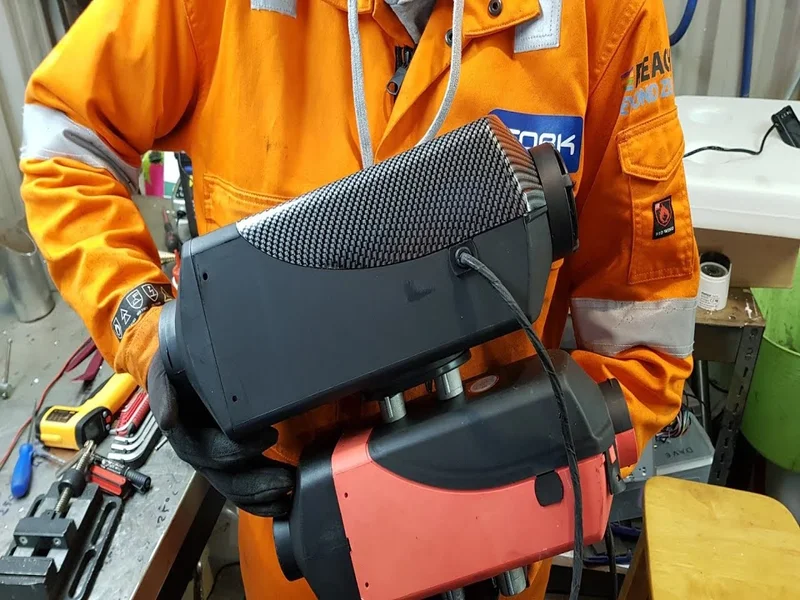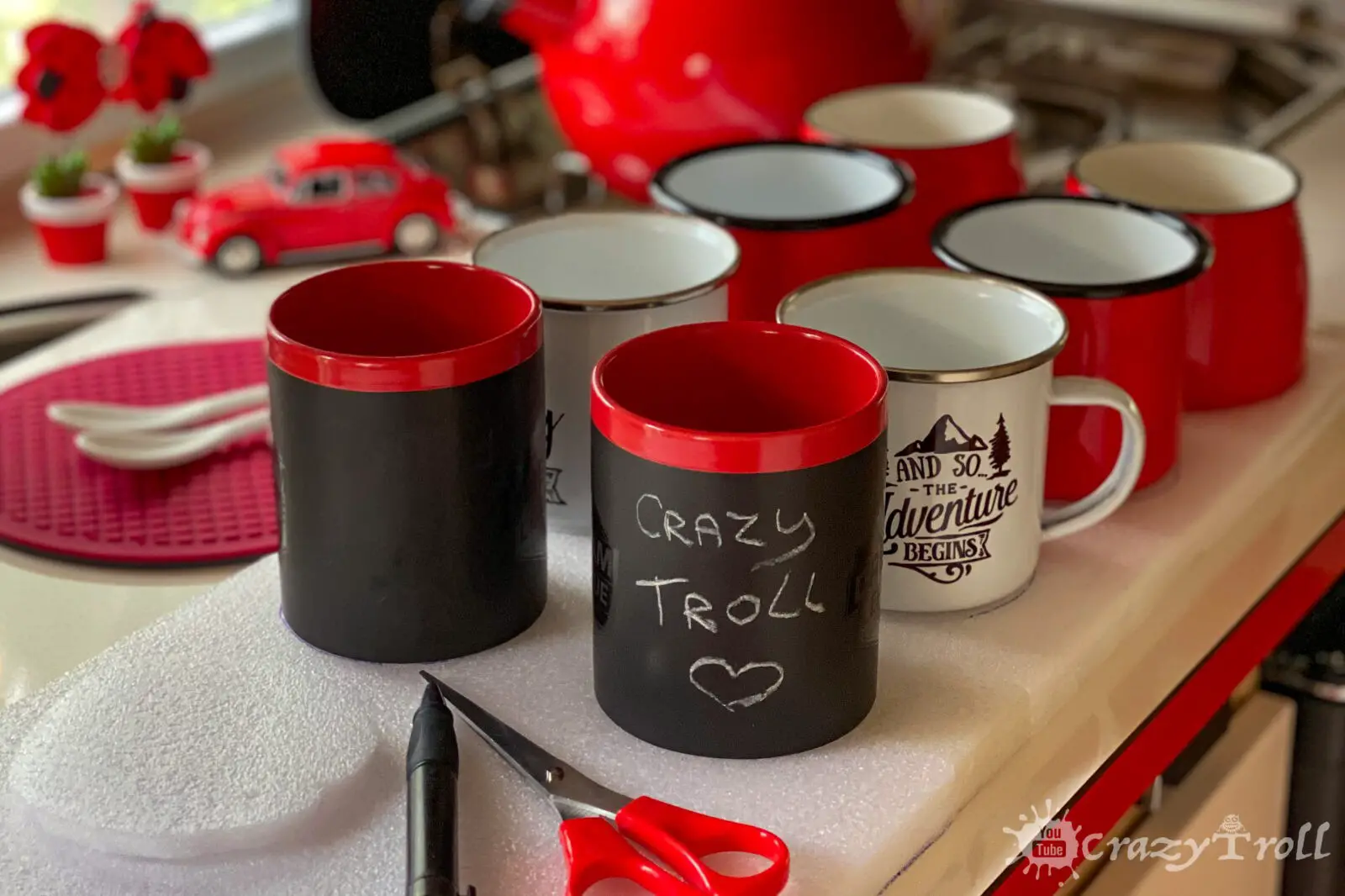Seasoned caravanners will be well acquainted with the dreaded black marks that build up over time around windows and doors, but they can come as quite a shock if you’re new to the game, especially if you forked out for a shiny new model.
Don’t worry, though, friend. Before you paint your entire caravan black to hide these common blemishes, you should know that it is absolutely possible to remove them.
Granted, they can be pretty stubborn stains if given time to thicken and adhere, but with the right products, a can-do attitude, and a little bit of elbow grease, you’ll have them gone in no time.

So, how’s it done? Well, there’s no big secret, really. You may not have come across them yet, but there are actually plenty of cleaning products designed especially to remove black streaks from caravans and motorhomes.
A few popular products that people are reporting a lot of success with include…
- Star Brite Instant Black Streak Remover
- Korkay Awning Cleaner and Black Streak Remover
- 303 Products Black Streak Remover
- Bio-Kleen Black Streak Remover
- Thetford Premium RV Black Streak and Bug Remover
- Prosol Works Bugs N All Bug Splatter and Black Streak Remover
It’s important that you choose a product that’s marketed specifically towards cleaning black streaks, as many other cleaning solvents on the market will be too abrasive. Sure, they’ll get the black marks off, but you can bet they’ll be taking off a few layers of your paint too.
The Process
After you’ve equipped yourself with some black streak remover, all you need now are some car sponges, some microfiber cleaning cloths, a medium- or large-sized paintbrush (all will be revealed in a moment), and a bucket of warm, soapy water.
Step 1. Give your caravan a regular wash
You can go in all guns blazing with your black streak remover if you want, but that stuff’s rarely cheap, so my advice is to do a preliminary wash with your warm, soapy water and car sponge.
With any luck, this will remove the top layer of the black streaks, making them easier to tackle when you hit them with the specialized cleaning products, saving you a few bucks.
Step 2. Rinse off the soap
Once you’ve given your caravan a good once over, rinse it with fresh water to remove the soap, preparing it for the application of the streak remover.
Step 3. Apply the black streak remover
Rather than applying the stuff directly to your paintwork, I’d recommend spraying it onto your microfiber cloth, then buffing the streak away with small, yet firm circular motions.
There are usually certain places that you can’t reach so easily with a cloth, such as around door handles or just beneath the lights. This is where your trusty paintbrush will come into play.
Spray the black streak remover onto the brush just as you did with the cloth, then go to town on those nooks and crannies!
Leave the streak remover on your caravan for around 5 minutes or so.
Step 4. Rinse
After the stain remover has been given enough time to work its magic, rinse it off with some more fresh clean water, and see what progress has been made.
Light stains should have completely disappeared, while the darker ones should have started to fade.
Step 5. Repeat
Now all you have to do is re-apply the black streak remover, and continue scrubbing until your pride and joy comes out squeaky clean — easy, right?
P.S. Each black streak remover will arrive with its own user instructions, so feel free to deviate from this guide in order to optimize its performance.
Why Do Caravans Get Black Streaks?
So, we’ve covered how to get rid of these mysterious black streaks, but have you ever been curious as to where they come from in the first place? Well, there are actually two main causes.
Biofilm
Above most caravan windows and doors are tiny channels designed to redirect rain. Much like the gutters on our homes without wheels, over time, they can get kind of messy. In this scenario, they fill something known as a biofilm.
Biofilm is an umbrella term for a build-up of various microorganisms, and when your caravan goes into storage, these little critters grow and grow, forming a more significant film. Algae and particulate debris then join the party.
When you unleash your caravan for your next trip, rain waters disturb the built-up and force the biofilm and its friends out across the exterior wall, forming those all too familiar black lines.
Denaturing Rubber
There’s another reason why these streaks are almost always more severe around the black rubber seals of windows and doors.
Rubber is a resilient natural material, but it’s by no means impervious to decay. Gradually, temperature changes and UV damage cause it to break down, and the tiny little pieces that come loose are washed down the side of the caravan where they form those troublesome black streaks.
The rubber particles then provide a frictional surface for more debris to accumulate.
The Solution
There are two ways to keep the black streaks at bay. One is to wash your caravan frequently, applying the black streak remover directly to the rubber seals to remove any denatured particles before they become a problem.
The second is to treat your caravan exterior with an overwinter substance that reduces surface friction, reducing the chance that particulate matter will find anchorage.
How Do I Keep My Caravan From Turning Green?
To prevent your caravan from going green, all you really need to do is wash it every few weeks with warm, soapy water, but If your caravan has already got a severe case of the green goop, it’s not so simple.
Green stains are actually made up of algae, and once this organism has a foothold on your mobile home, it can be a tricky squatter to get rid of. Even if you give your caravan a good clean, the spores can survive and grow back.
The trick is to use a cleaning solution that kills off the spores for good, but don’t choose something too abrasive as it will damage your caravan. You should also opt for a low-pressure hose and a soft bristle car brush rather than pressure washers and rough sponges.
Give your home on wheels a clean with your caravan-friendly gear, and the green won’t give you any more grief!








